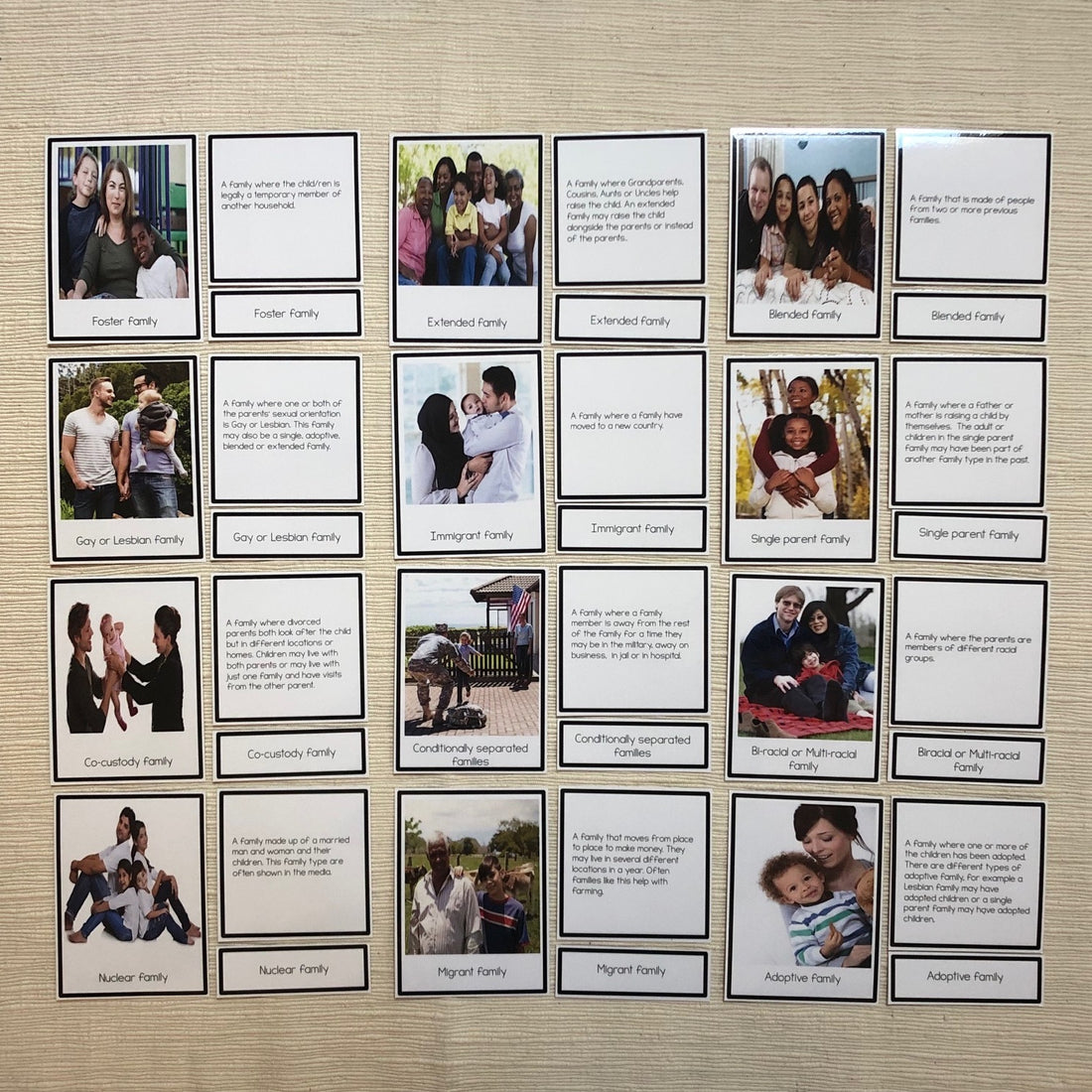
4 Strategies to bring diversity to the forefront of your Montessori Elementary Classroom
Share
I'm not sure about where you live but one thing I have noticed about some Montessori classrooms here in New Zealand is that they are dominated by 'nuclear-families' that is a male and female with children. Sometimes when something is predominant we aim our language and activities to the dominant group because surely that will appeal to them. Occassionally a special cultural event may be dropped in but it isn't the 'fabric' of the classroom.
Diversity is something that needs to be woven in to the everyday of our classroom. We can not plaster over it with discussion of 'peace education' and looking for our similarities without discussing the very real differences and issues facing children.
Daisy Han & Trisha Moquino say it this way:
"As Montessorians, we must be careful with the peace education narrative we are perpetuating and ask ourselves if that narrative is inclusive of what Montessori called the “defeated populace, who remain victims of disaster.” In order to be grounded in how to do this work, sometimes, we have to take time to sit with the uncomfortable truth and, when we are ready to take critical action, know that the action needs to be deeply informed by proximity and lived experience" -
1) Think about the language we use
As Ash from Diamond Montessori has said even if (and this is a big if) we think all of our families are of a certain type e.g. Male and Female relationships using inclusive language could be a life changing event for a child in our care who is LGBTQIA+ . For example when giving out newsletters at school I tend to say 'Please give this to the adults who look after you' rather than 'take this home for Mum and Dad.
In our classrooms we can also organically include inclusive language through our curriculum. Let's take grammar for example. Instead of having children symbolise a sentence that says 'Jenny's Mum and Dad walked to the store' you could say 'Jenny's Mums walked to the store.' In this way you are normalising family types.
When talking about Indigenous Peoples it is important we use the name that they identify with this differs from country to country so I am not going to give any specific examples as I cannot speak for each people group. It is important to think and act on colonialism, systemic racism and the language we use in our classrooms.
2) Including diverse books , perspectives, discussion and pictures
Having books with diverse characters doing everyday things again helps normalise family, culture and religions. Check out these book lists for children
2 Families in Different Shapes
4 First Nations and Indigenous Booklist
5 Picture books about refugees
6 Books featuring LGBTQI families
When presenting the fundamental needs of humans you could include these photo essays of families around the world. When I have used them I have again highlighted how this is one family/person in one country and it gives us an example of that place however other people in that country may eat less or more or sleep in a bigger or smaller room. At this plane of development, children are aware of nuance so it is good to talk about it. Discussing current events including conflicts and issues of power imbalance including colonialism are particularly important in helping our children see injustice and act on it.
If your classroom is relatively homogeneous, it is perhaps even more important that your students learn about other ways of being or doing so that they can be a force for social change and understand the privilege they might have. You can organically include different worldviews and families through activities such as these:
World Religion bundle: Card sets that include key elements of different religions
3) Keep activities inclusive and talk about what is happening in the child's world
in Montessori we offer the child the world and include world and cultural holidays in our classroom programme. Days such as Mother's Day and Father's Day are not ones I personally include in my classroom as while they may meet the needs of many students in my class there are frequently other children in the class who may have trauma associated with these dates.
Another thing to think about is what perception celebrating Mother's Day or Father's Day has to prospective families. Let's say your school community is (by your analysis) mainly made up of families where there is a mother and father. You therefore decide to celebrate Mother's Day and you also decide to hold an open day on Mother's day where prospective families are invited to the classroom. If you were a multi generational family or a solo parent family or a gay couple would you feel like such an event would be welcoming to you?
Children are often very aware of what is happening outside the classroom. If we ignore discussion of these topics and carry on 'as usual' children notice that we don't think those issues are important. We miss a valuable opportunity to learn with the children about what they see as happening.
4) Model and verbalise that you are a learner too (including about current events)
Build a culture of respect where all students feel respected and know that while people may look different to them or do things in different ways all people deserve respect. Some of this will come through doing 1-3 above but it's vital to make it explicit too.
Being reflective about who you are and what perspectives and perceptions you bring with you are vital to increasing the educational outcomes of our students. I have found this Montessori group: Montessori for Social Justice really helpful in prompting and growing my learning.



